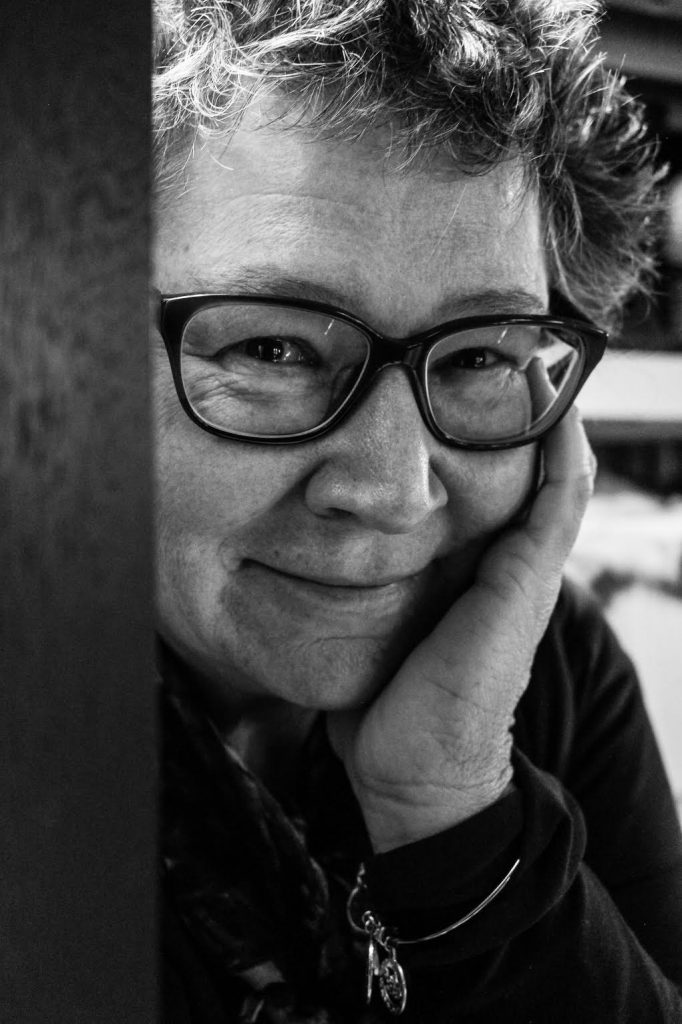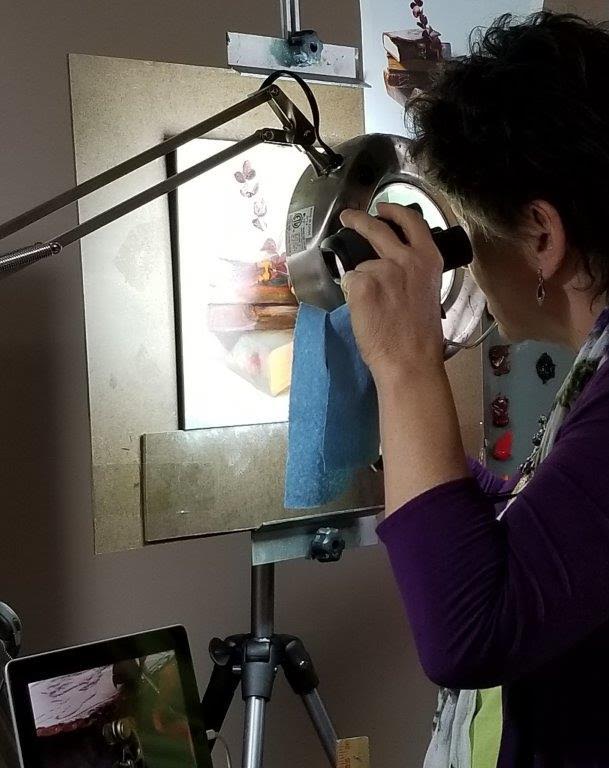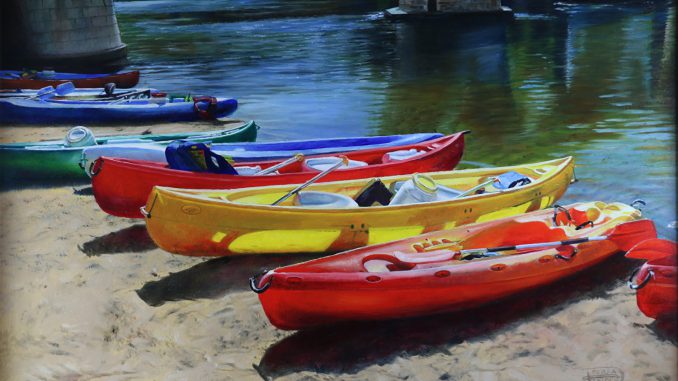
By Joe Motheral
Debra Keirce hunches over her easel, peering through an oversized magnifying glass. Captured between her fingers, a delicate brush thrusts and parries with the canvas in front of her.
She’s surrounded by her armaments — a rough-hewn cabinet, 15 drawers in all, filled with paint tubes galore, gleaming silver canisters holding brushes of every size. And staring down from the walls are a riot of paintings — some by her, some by her friends.
It is literally the quintessential painter’s studio — and it’s tucked away in a corner of the basement in Keirce’s Broadlands home.
But Keirce is not just any artist — she’s not a graphic artist, nor a cartoonist, nor an animator. And she’s certainly not a hobbyist or dabbler. She’s what many — including herself — call a “fine artist,” and it’s a passion that has consumed her for most of her life.
“I create art that is meant to be experienced,” Keirce said. “I am hoping to convey the magic in my life experience in a way you can sense — whether it is through emotion or one of your five senses. That’s what distinguishes it from other forms of art.”
From her home studio, Keirce has slowly and steadily created a burgeoning business centered around her art. She paints subjects that move her and offers them for sale at venues around the country. She also takes commissions — meaning clients can hire her to paint something that is special to them, such as a portrait of a loved one or a favorite home. Finally, Keirce shares her talent with others by teaching online classes as well as holding periodic workshops at her home studio.
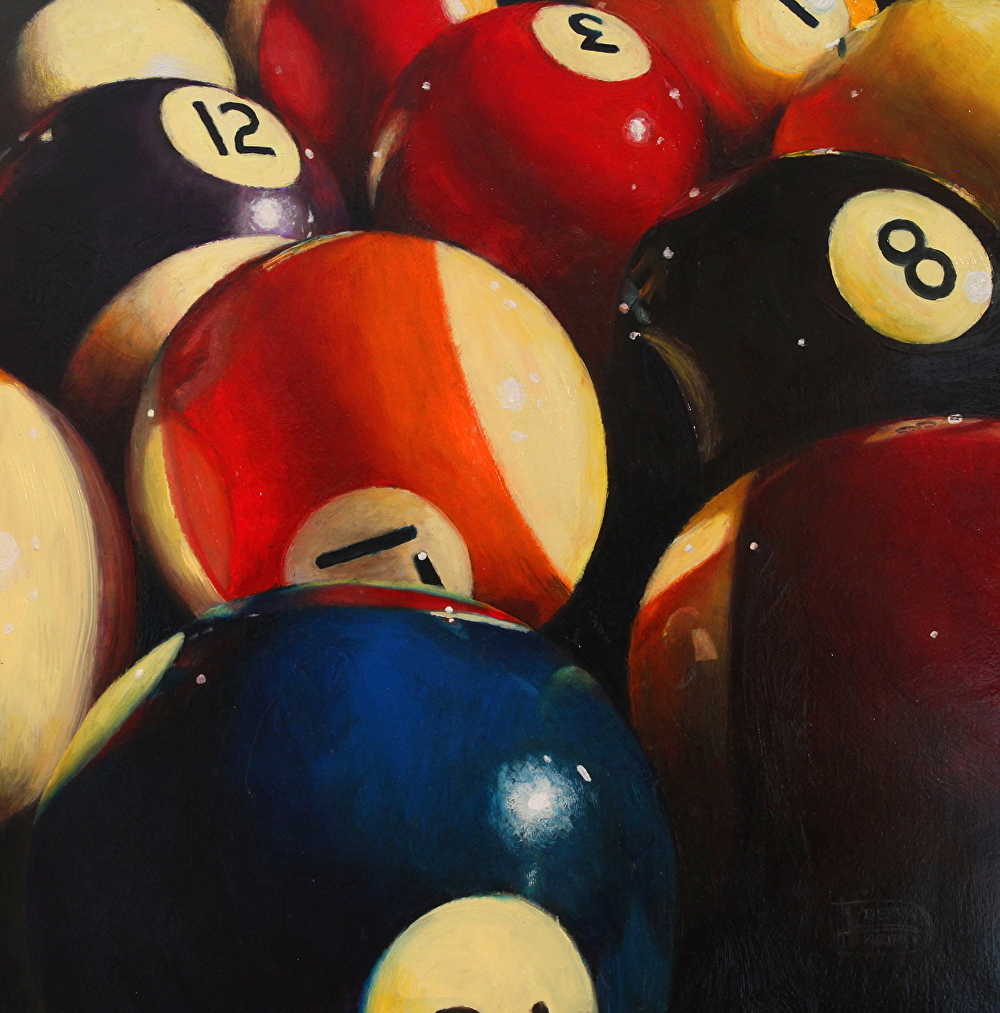
“I don’t have a typical student. Each is unique,” said Keirce, who has taught a wide range of individuals, including a 12-year-old and an 82-year-old. “They come from all different socio-economic backgrounds and ethnicities.”
Abby Payne is originally from Germany and now lives in Sterling. She has been an artist since high school, primarily just as a side gig. But in 2018, she decided to pursue art as a career and began taking art lessons with Keirce. After 12 months, Payne says the progress in her art is remarkable.
“If you could see the paintings I did at the beginning versus now, it’s a world of difference,” Payne said.
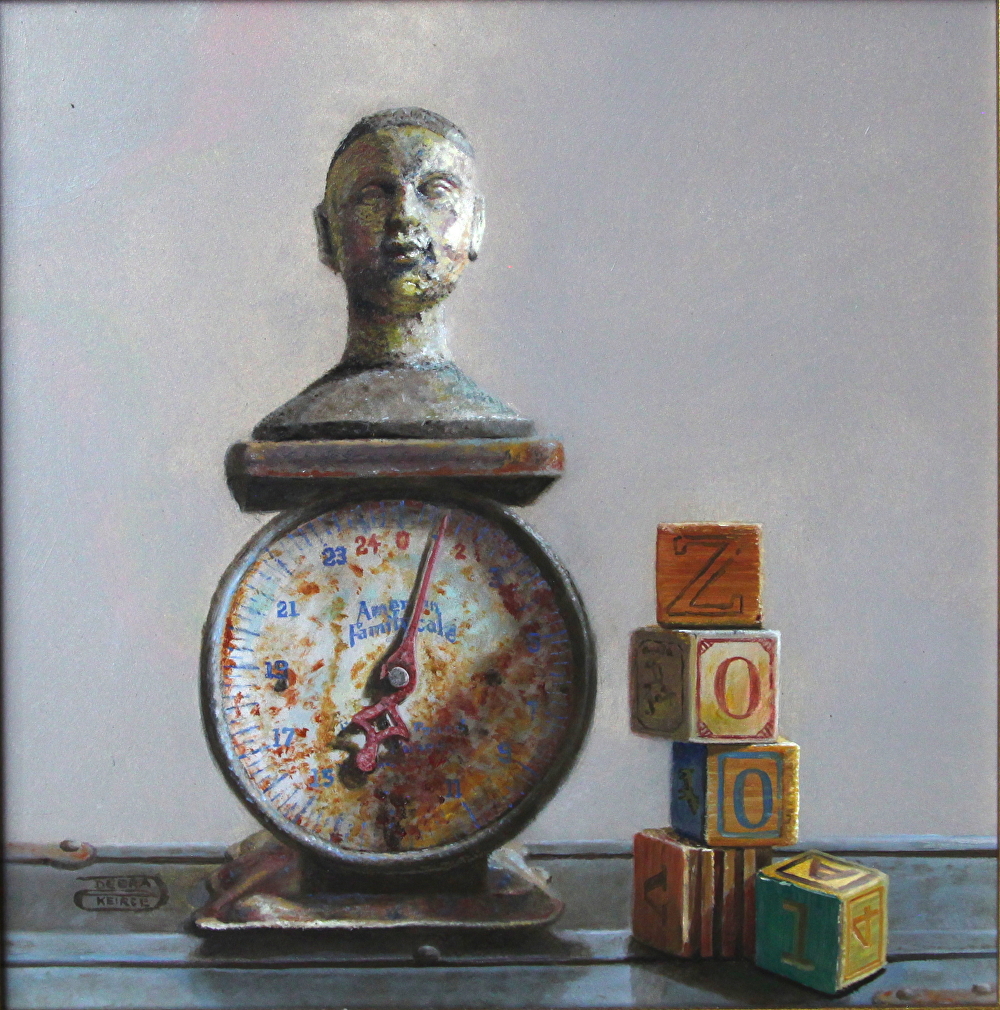
Keirce was born and raised in the Detroit suburbs. Her interest in art came early, when she was about 7. Her mother always had art supplies around the house, and Keirce recalls taking some of her mom’s charcoal sticks and sketchbooks and sneaking downstairs with them to draw a train she had seen in a book.
“In truth, I’m sure my mom would have let me do it in the wide open, but it felt more special because I was being sneaky,” she said.
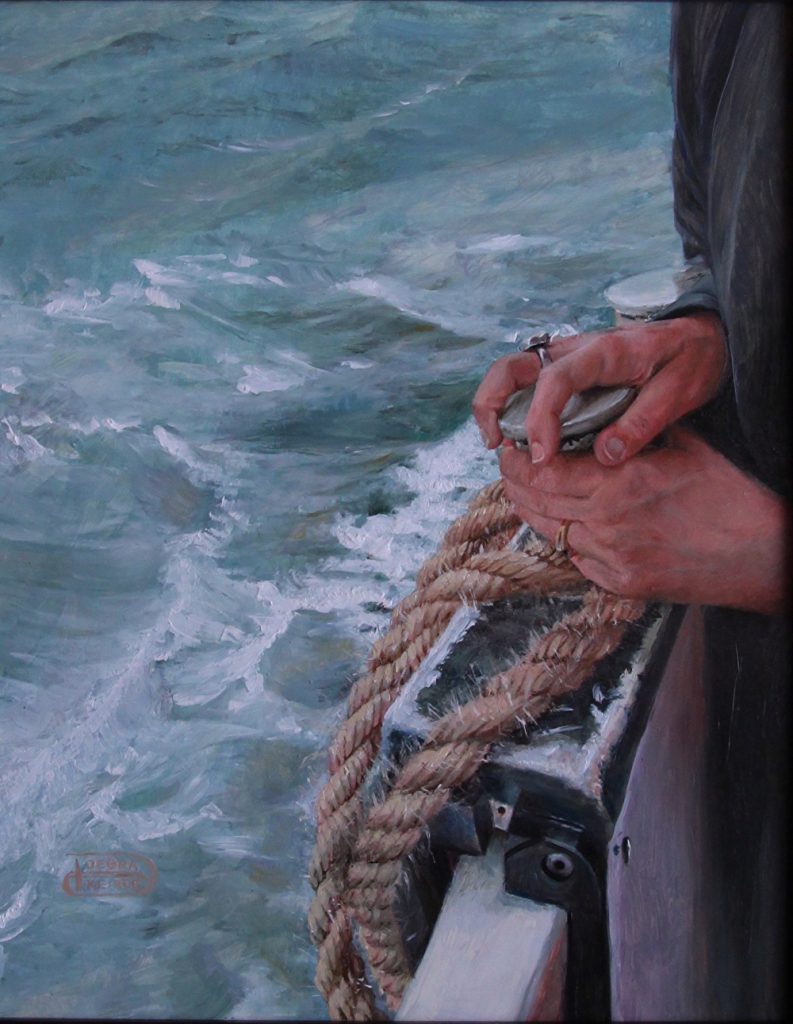
After finishing high school in 1979, Keirce was offered a scholarship at a prestigious art school, the Cranbrook Academy of Art in Michigan. It should have been a dream come true for an aspiring artist, but Cranbrook didn’t feel right to Keirce.
“They were not teaching students how to paint and draw realism,” she said. “They were teaching concept art and graphic arts. They were teaching the types of art people could make a living doing. The only place they were teaching classical realism and draftsmanship was in Europe and I couldn’t afford to go there.”
Keirce went on to attend the University of Michigan, where she earned a degree in biochemical engineering. She says the 1980s were an exciting time to work with companies in cutting edge biotechnology research, and she enjoyed a long and successful career in the field.
She married, settled in Ashburn and raised a family. Husband Cliff, an air traffic controller, is well known in Loudoun County for his many leadership positions, including serving on the county’s Planning Commission. The couple has three children — now grown and out of the nest.
But Keirce never relinquished her love of art. Over the decades, she kept painting as a hobby and also took commissions for work.
“She always still dabbled in art — she kept trying to do something,” Cliff Keirce said. “Once the kids got to the point where they didn’t want mom and dad around anyway, I encouraged her and said, ‘Go back into it as much as you want and take it as far as you want.’ That is her true love.”
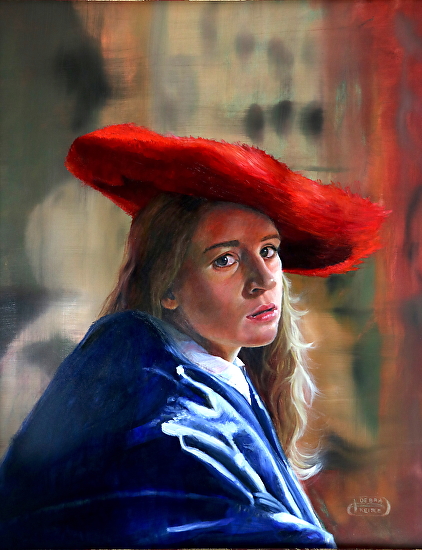
Finally, in 2010, she decided she was ready to make the leap and become a full-time artist. It was an exhilarating moment.
“I was excited to finally paint the subjects I wanted to paint,” she said. “Until then, I drew and painted only the portraits, pets, homes, churches, landscapes, etc. that people commissioned me to paint. The transition wasn’t from engineering to art. It was from a commission-based part-time art to a full-time, professional fine artist career.”
The artistic movement known as realism has always been central in Keirce’s works. Realism is generally described as the attempt to represent subjects as they really are, without artificiality. The Dutch masters of the 17th century — Rembrandt and Vermeer are the two most famous names — were early proponents of this style.
Today, those Dutch masters provide the basis for many of Keirce’s paintings.
“The Dutch masters improved on the level of realism portrayed by the masters in their historical era, like Da Vinci and Verrocchio,” she said. “Also, they famously painted average people in everyday scenes. Their flowers have bugs on them. Their people are often peasants. They put the ‘real’ in realism.”
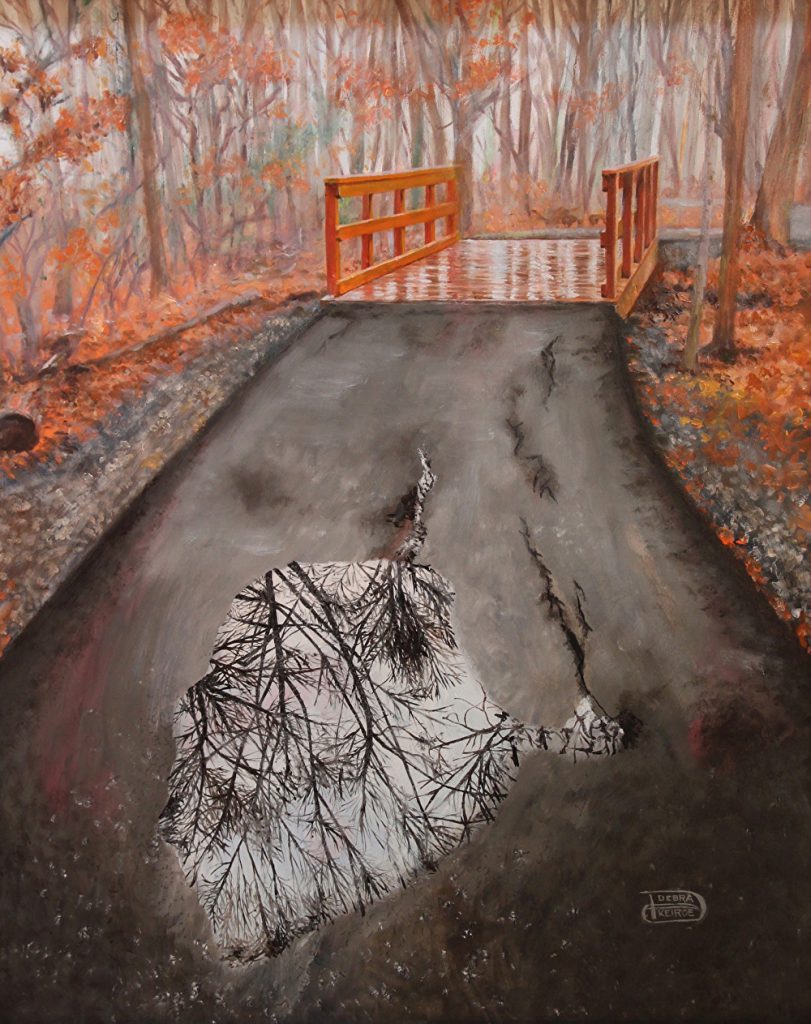
Her paintings run the gamut — from still lifes to landscapes to portraits — all inspired by classical realism, all pulsating with life. The sheen of reflection off a chilly puddle on a fall day. The warmth of a rock wall glowing with illumination from an unseen source. The sparkling eyes and Cheshire grin of a behatted woman named “Jenny” with whom you immediately want to be friends.
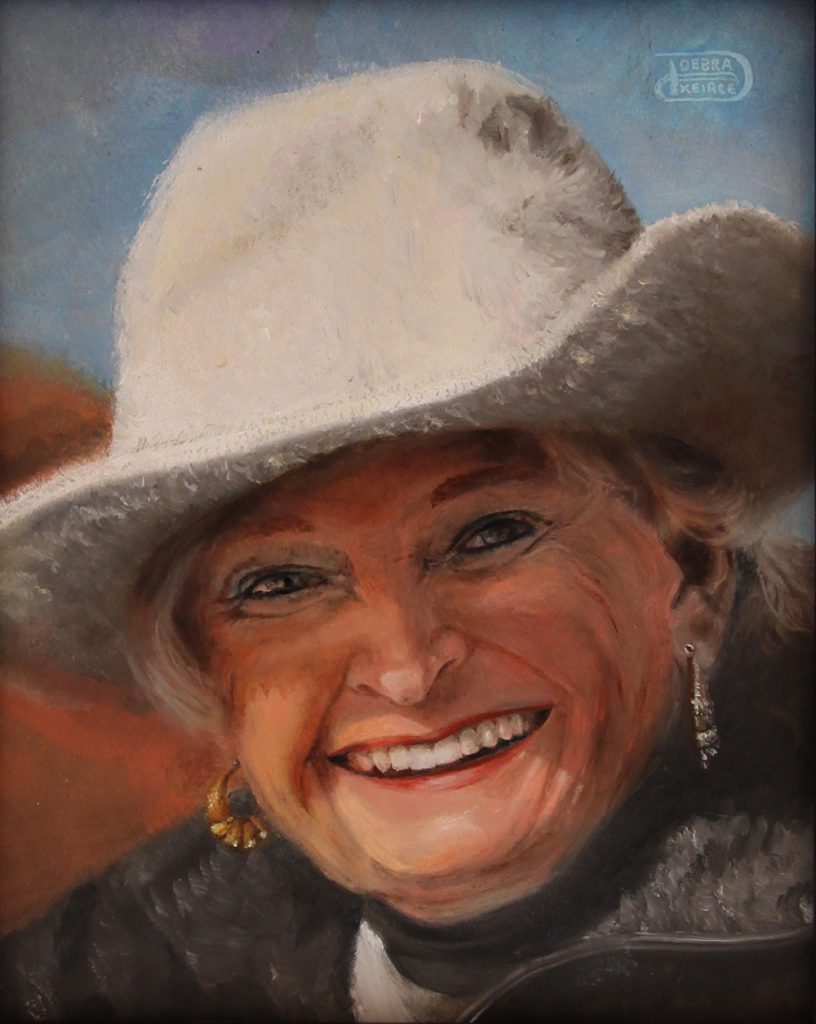
“My personal goal in my art is to give the viewer an experience,” Keirce said. “I try to stimulate all the senses. I want them to feel they are in the painting — feeling the heat, or the splash of the wave, smelling the flowers, hearing the birds chirping in the distance.”
Keirce’s students benefit from the two sides of their teacher’s brain — the scientific half and the artistic half.
“With her background in chemical engineering, she definitely stands out from other artists in the sense that she understands the chemical background and how these paints behave and work on the micro-level,” said Payne.
Among the more unusual aspects of Keirce’s art is her love of “miniature” fine art painting. This is defined as a painting that is smaller than 25 square inches, or basically 5 inches by 5 inches. Thus, the need for special equipment such as magnifying lenses and close range binoculars.
“I can paint suggestions of details in miniature that fool the eye into thinking I have depicted more,” Keirce explains on her website. “Another trick I employ is using sculpting tools instead of brushes during my final painting layer. The impasto creates shadows that come alive and dance in natural light with the slightest change in perspective.”
Despite being a full-fledged business with sales and commissions and workshops, “DebKArt,” as she calls it, will always be more about passion than profit.
“I choose to be a professional artist because it is my goal to be the best classical realist painter I can be in my lifetime,” she said. “I prefer to measure my success by experiences, and I wouldn’t trade my experiences in this art career for anything.”
Joe Motheral has been a writer for more than 50 years and has written for many local publications. He’s a member of the National Press Club and lives in Lansdowne Woods with his wife Marjorie.
===========
To learn more about the artwork of Debra Keirce, or for information about her classes and workshops, check out her website: http://www.DebKArt.com.

